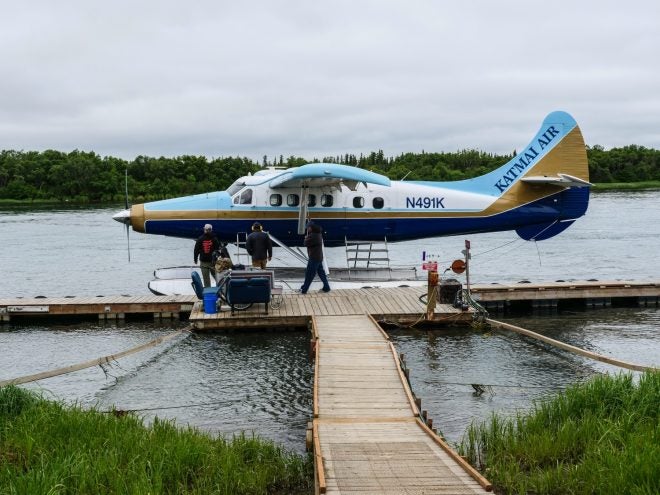
“Fifty pounds per person.” According to our tickets, that’s how much baggage Lindsay and I were allowed to bring on the float plane – the only way into Katmai National Park. As we were going to be camping in Katmai and Denali National Parks for a week in July, our provisions (camping gear and MREs) weighed almost exactly 50 pounds. We had another 50 to spare for a week’s worth of clothes, cameras and lenses, electronics, batteries, binoculars, and – pertinent to this article – shoes.
We were planning on hiking 10 to 15 miles per day while we were camping, and many of the trails we were looking at hiking could be wet or muddy in the summer, so hiking boots were a must. But we were also going to be spending time socializing in Anchorage where boots might have been a little out of place. Shoes can be heavy little bits of gear – especially hiking boots – and I’d rather bring another lens or camera body than pack two pairs of shoes. So I packed one pair of shoes and decided to bring more camera gear instead. I chose the Altama OTB Mids.
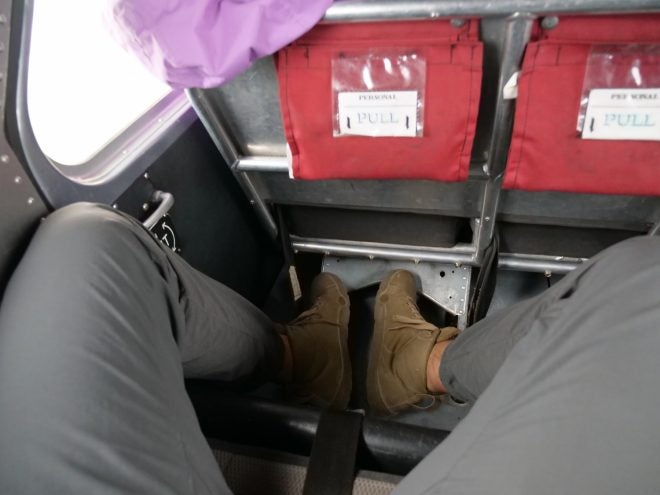
‘Tamas on the Otter.
When we “checked in” for our flight, I made a smartassed comment about whether or not having normal BMIs got us a few extra pounds of gear. The pilot smirked and turned a blind eye to our four pounds of overage. We made our way to the ten-passenger de Havilland Otter float plane. We chugged into the sky, above forests covered ridges, winding rivers, and teal-hued lakes below. The flight itself was worth it.
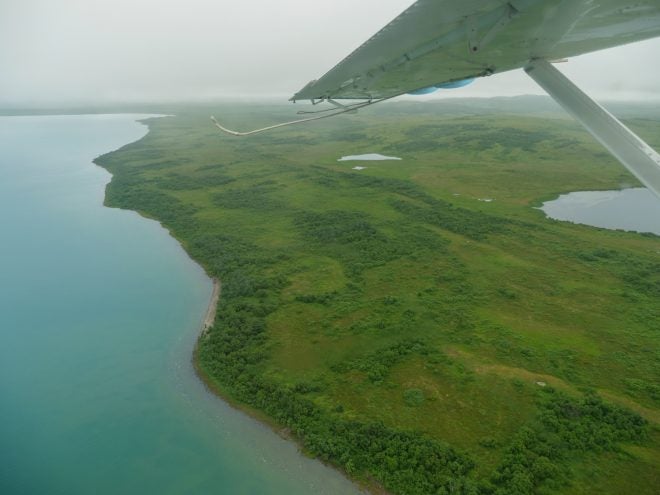
Flying from King Salmon to Lake Naknek, where Katmai’s campground is situated.
We landed in one of the larger bodies, Lake Naknek. We gently glided onto Naknek like a big metal mallard descending into a mint-Listerine-colored pond. These Alaskan bush pilots are so adroit that you don’t even notice when the floats ht the water when the lake’s flat.

Naknek “airport.”
As a Converse All-Star fan, having owned at least one pair at any point in my life, I’d been looking at the Altama OTB before this trip for unrelated reasons. Those unrelated reasons being the same reason that you’re probably reading this article – because I like the styling. They appeal to the gun set as tactical footwear that won’t make you look like you just fell off the pages of an L.A. Police Gear catalog. They say “I’m into firearms and firearm accessories but I don’t have a molon labe tattoo.” Oversimplified, the OTBs are tactical Chuck Taylors. They are made by Altama, a boot manufacturer who has been cobbling military-issued footwear since 1969. They are made to be compatible with dive flippers and are thus designed to withstand submersion. They are lower profile than your average military boot or, worse, the daddified tactical British Knight mid boots that everyone is pushing these days (although tactical British Knights would be really cool – bonus points for IR light up soles). Plus, they have that rich military pedigree that gun-gearheads love. The design has been popular enough that there’s at least one “tac-Chuck” knockoff of the OTB being made right now.
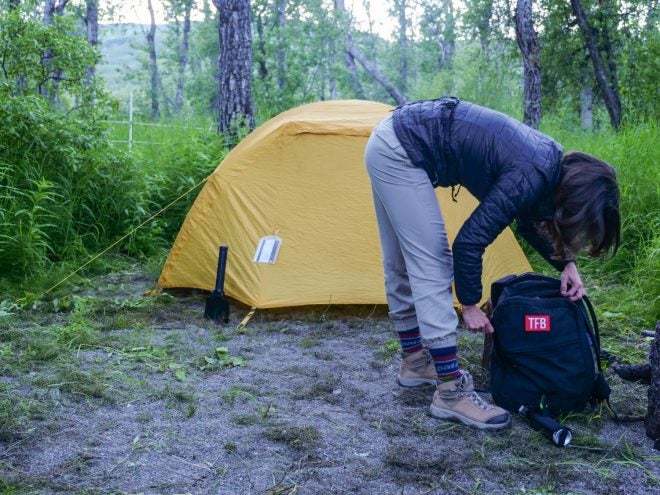
Gotta rep the brand, even in the backcountry of Alaska. (Speaking of, hey Glock, thanks for the E-tool.)
While I prefer waterproof, thick-soled boots for hiking over water-permeable, flat-soled boots like the OTB, my waterproof Sorels are 2+lbs per boot (i.e., a pair is nearly 10% of our non-essential luggage quota), and the Altamas are less than half of that. Moreover, weather is actually pretty warm during southern Alaska’s summer, so waterproofing is less important than in snowy or cold environs. But most importantly, I don’t own any hiking boots that I would wear to Simon & Seafort’s (great spot!) in lovely downtown Anchorage. The OTB mids, though, put out a street-clean vibe that works well under jeans.
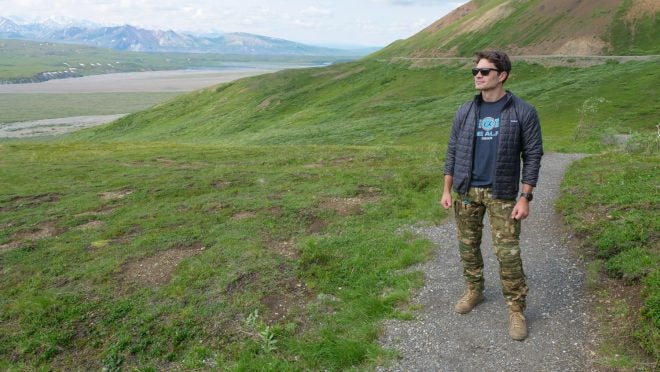
…or under UF Pro tactical pants, whatever.
In other words, the OTB looked like a potential one-shot sole-ution that would work for the trail or the pavement, saving me extra weight and baggage space.
Before I put my trip at risk with unproven footwear, I researched online to try to find reviews or insight about how these barely-boots would perform on a trail. While I did find this excellent article from Spotter Up which gave me enough confidence in the shoe to buy them, there wasn’t an article out there where the author had taken the OTB on an extended hike.
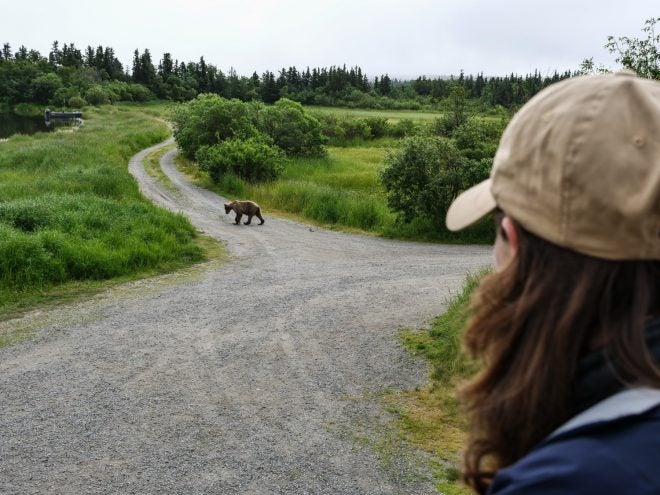
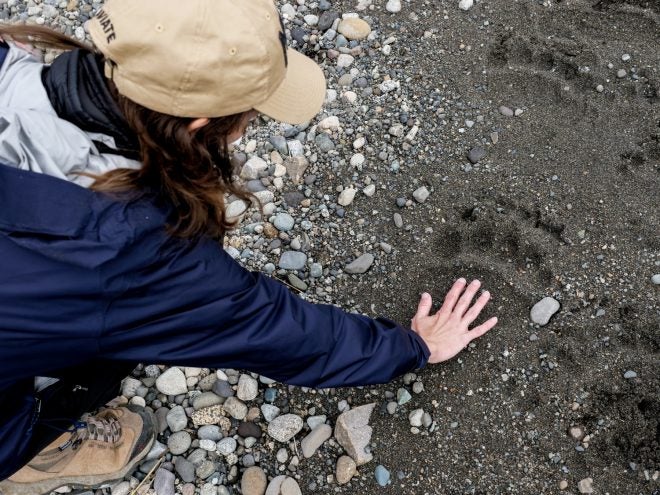
We saw plenty of grizzlies in Alaska, up close and personal.
Thus, I put my body on the line for you, TFB readers. I purchased the OTB with the intent to test them on moderate-distance trails, and then to report the results to you.
Initial impressions were good. The shoe looked and felt well made. They tell you to order a half size to a size up, and I can confirm. I usually wear a 10 to 10 1/2, and an 11 is just right, perhaps even on the snug side with wool hiking socks. The reinforced Cordura construction is light but durable, and the stitching appeared to be robust.
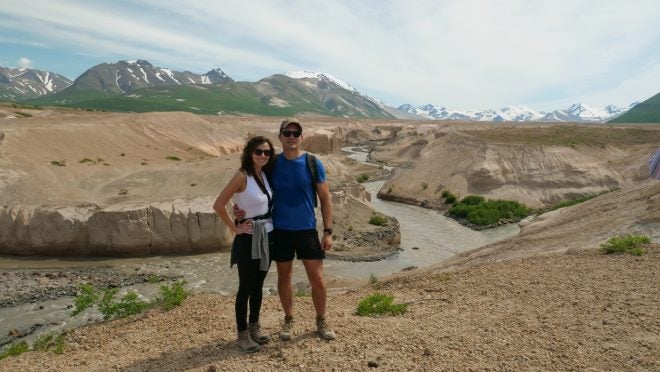
OK, so hi-tops and shorts – not exactly *that good* of a combo…but they aren’t *that bad* either…Right? Anyways, here’s the Confluence inside the Valley of 10,000 Smokes. OTBs worked well on the mixed rocky/sandy ash surface in the valley.
Slipping a foot in the OTB was… kinda weird. Almost like putting your foot in fabric bubble wrap. The interior of the shoe, including the back of the tongue, is lined with a mushy-crispy mesh surface, which no doubt helps air and liquid permeate through the shoe. The dense, rubbery insole and the meshed scuppers at the lowest point of the shoe reaffirm that this is a boot designed to allow water to freely pass through it. But they were comfortable and, damn, they looked pretty sharp too. I wore them for a few days before the trip to be sure there weren’t any potential issues that would make me blister-footed bear bait. The next thing you know, I’m walking through Pre-Check with my coyote brown OTBs to my Alaska Air flight.
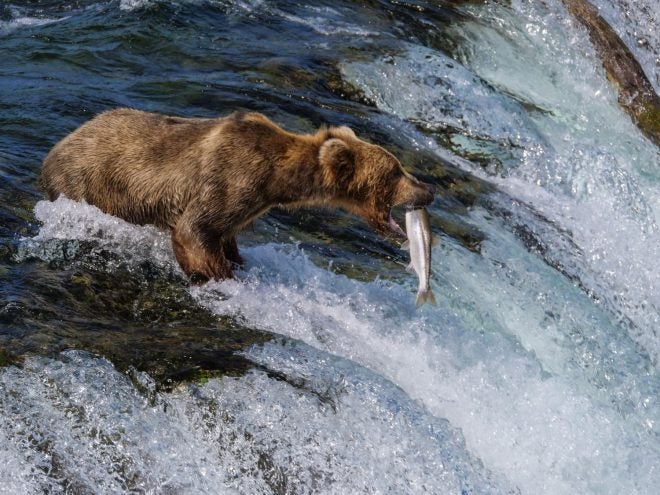
Got the shot I wanted in Katmai at Brooks Falls. The live webcams set up there in June through August are good TV. This bear’s name is Beadnose, and this is what she looked like in July. If you want to see what she looked like in September, check this Reuters article about her.
To cut to the chase, hiking performance was better than I expected. Obviously, foot cushioning and ankle support were not as good as my usual hiking boots, but I have to re-emphasize that typical hiking boots can weigh as much as twice as the OTB. In terms of weight-to-performance compromise, the OTB are more than adequate. In Denali National Park, we hiked the McKinley Bar trail – a trail from Wonder Lake to the McKinley gravel bar that ends with un-occluded views of Denali over a river. The spruce-lined path becomes a shallow creek with river rock bedding for perhaps a quarter mile.
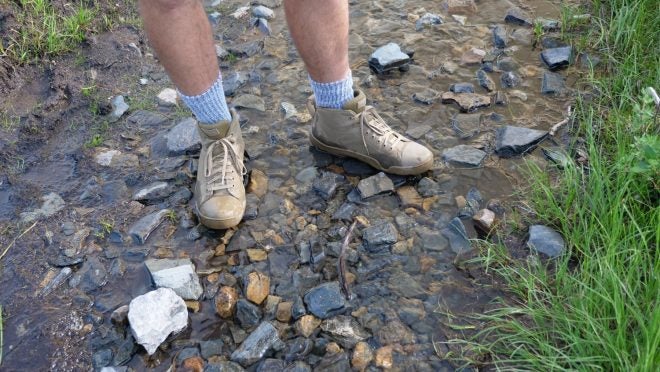
The creek-over-rock portion of McKinley Bar.
While I certainly felt the rocks against my feet more than I would with a “proper” hiking boot, I felt that the cushioning and heel support were serviceable for this type of terrain. I questioned whether or not I would have even noticed the difference if I wasn’t thinking “James, you better pay attention to whether or not you can feel these rocks just in case you decide to review these boots later.”

Walking over rock was more noticeable than with my proper hiking boots, but definitely tolerable.
Ankle support was good as well, and especially appreciated on the Savage Alpine Loop in Denali, which included a long stretch of trail over loose rock alongside a mountain. If you twist an ankle up there, the (adorable) ground squirrels will eat your boots and leave you for dead.

Savage Alpine Loop in Denali.
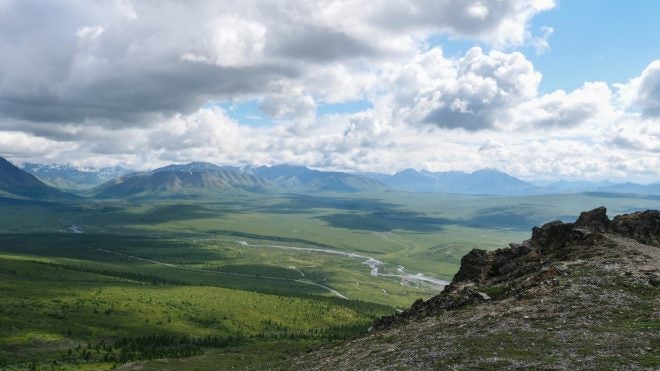
Jaw dropping views from the Savage Alpine Loop.
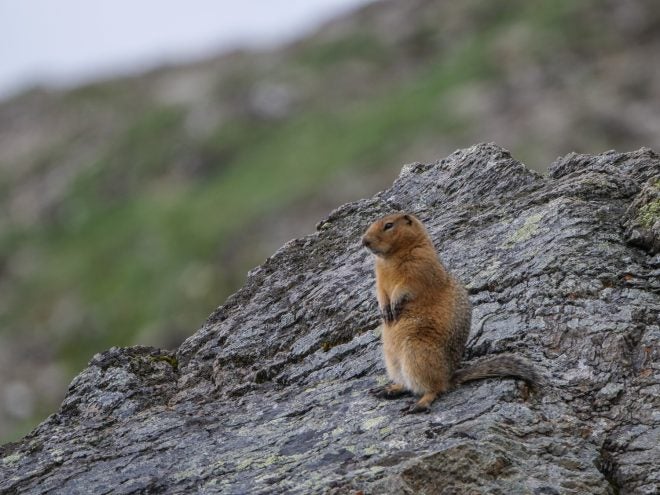
(Seriously, the ground squirrels in Denali will really eat your shoes if you don’t pay attention.)
I walked 194,459 steps during my week-long trip to Alaska: Roughly 100 miles. It’s safe to say that 95% of those steps were made in my OTB. In fact, I would say 99% of them were but for the fact – as I discovered – that shoes in houses are generally frowned upon in the parts of Alaska we visited.
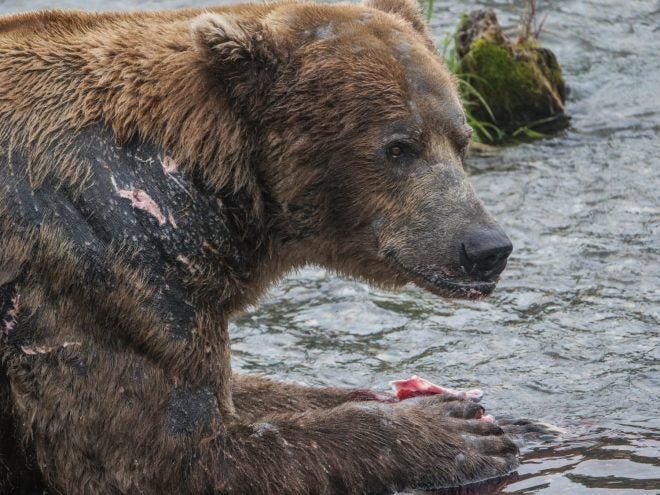
A close encounter with this very big boar grizz.
Those steps included trails in Katmai and Denali National Parks: Katmai’s Dumpling Mountain Overlook Trail, the River Confluence Trail in The Valley of Ten Thousand Smokes, the aforementioned McKinley Banks Trail, and the incredible Savage Alpine Trail in Denali. The OTB were lightweight but provided good traction, responded well to water, absorbed shock well enough, and I didn’t wake up with aching feet. Properly fitted and with correct hiking socks, blisters or raw skin were of no concern.
I should also note that mosquitoes are really, really bad in Alaska when it’s warm. As bad as the bayou down here in South Louisiana and almost as buggy as the Everglades. So these boots absorbed about a weeks worth of DEET (which is notoriously hard on soft materials) and permethrin without any indication of damage after they were washed when we returned from our trip.
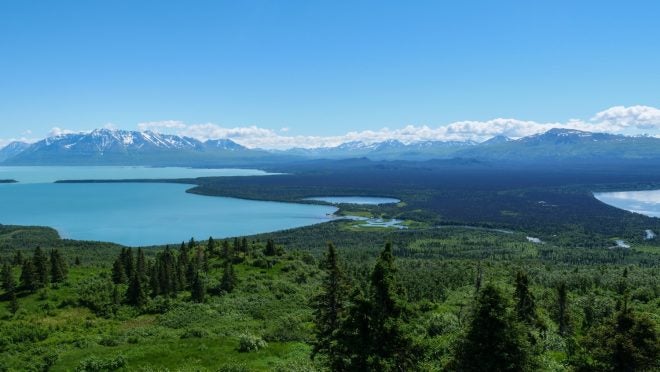
Dumpling Mountain Trail, Katmai.
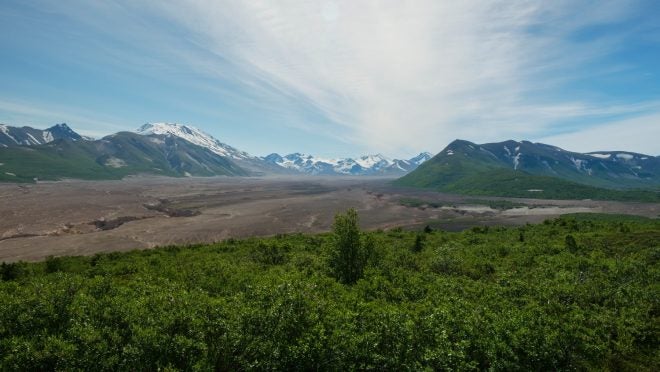
The hike to the bottom of the Valley of 10,000 Smokes (and back up) is more difficult than the gradual, rolling terrain would have you believe at the trailhead.
The bottom line is this: If you have plenty of space in your luggage to spare, are not flying on a plane that makes you step on a scale before boarding, and/or don’t need to worry about making a social obligation during your hiking trip, then there’s no reason to not opt for your usual Danners or Merrills. The Altama’s aren’t hiking boots, per se. A bedsheet’s not a sail, either, but it can do the job just fine in a pinch if conditions are right and it has to. Similarly, the OTB worked just fine – more than fine – over a week of hiking 100 miles in summertime Alaska. They saved weight and a bunch of cubic inches in my bag, and they even drew a few compliments in tres chic, oh-so-fashionable Anchorage (and they continue to get sporadic praise since we’ve been home).
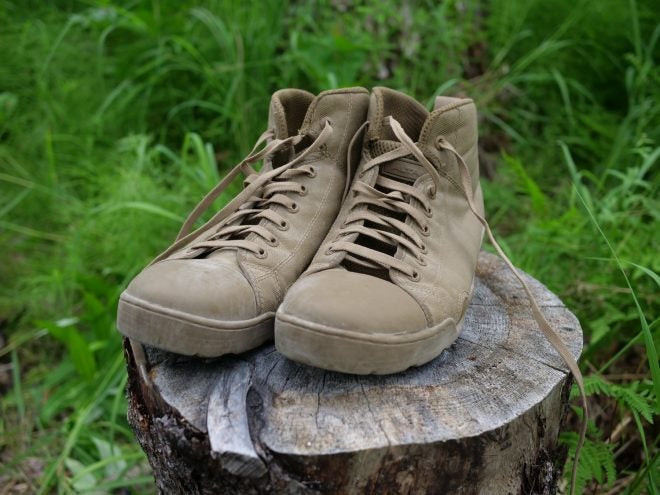

As we sit here today, over 100 miles later, the OTB still have plenty of plodding left. Good boots should last at least 500 miles, so 100 miles is perhaps the equivalent of a 500 round torture test: It’s only a somewhat useful indicator of durability, but it will tell you a lot about functionality. In that 100 miles, I found these boots to be functional – even good – for hiking.
The OTB might be popular with tactical trendsetters right now for their tactical Chuck Taylor edge, but it’s comforting to know that they can ride the dirt pretty well too.
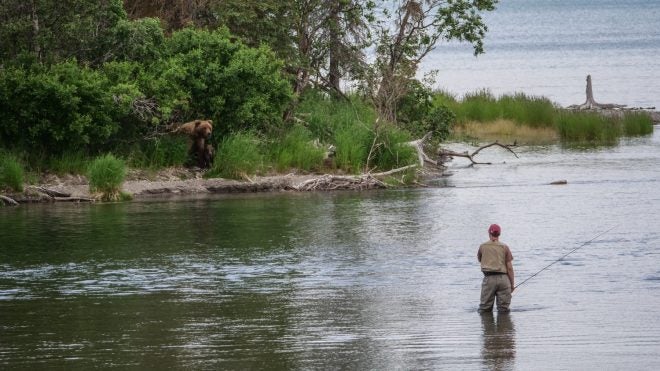
Of course, blisters aren’t all you need to worry about in Alaska: Knowing how to safely and effectively protect yourself from a big brownie is key. See James’ video on how to defend yourself in bear country here:
 Your Privacy Choices
Your Privacy Choices